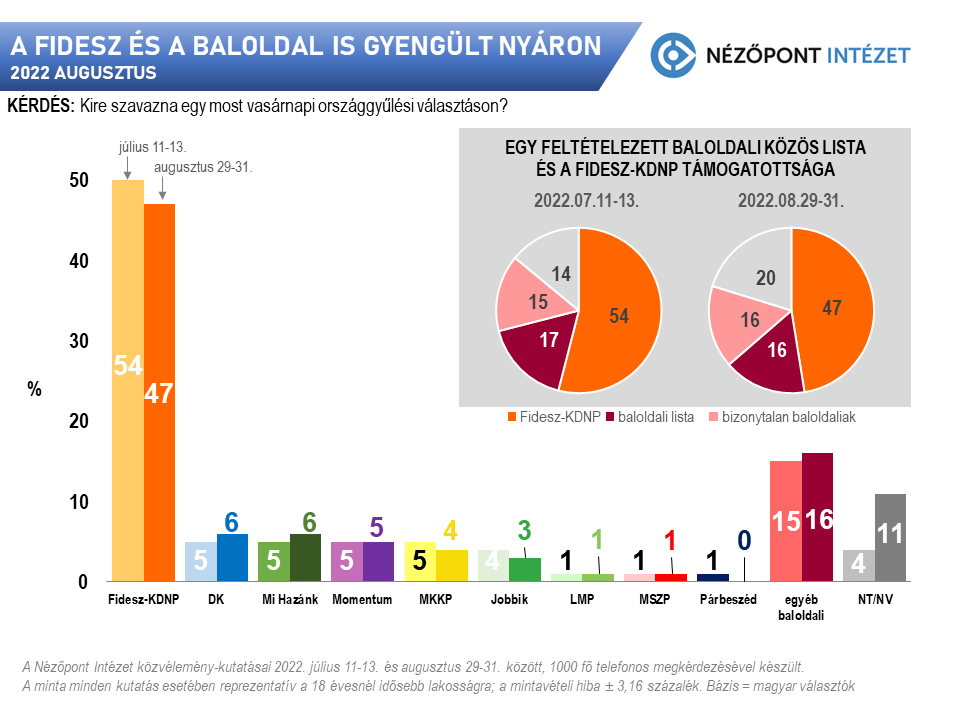Since July, the support of the ruling party has decreased by seven percentage points, to 47 percent, but its left-wing opposition also weakened during the summer. If elections were to be held on Sunday, Fidesz would win with a significant margin, the survey of the Viewpoint Institute states.
After the elections - in accordance with the often observed phenomenon of pulling for the winner - Fidesz's support even increased. His result of 52 percent among domestic voters rose to 55 percent in June and 54 percent in July. During the summer, however, there was a turning point: in the last days of August, the ruling party had only 47 percent of Hungarian voters behind it, of which two percentage points can be considered fringe voters, i.e. it can be easily detached.
The reason for the clear decrease that occurred in the last month and a half can be mainly the rising energy prices due to the Russian response to the Western sanctions, as well as the accelerated inflation and the pessimistic consumer sentiment.

The left-wing opposition of the ruling party could not benefit from the weakening of Fidesz, and even the overall support of the left further eroded. A decline in the political market as a whole can be observed.
Those who left the Fidesz camp became uncertain, not oppositional. This uncertain group, which has now grown to 11 percent, includes citizens who do not vote for any party list, but are still active. The six left-wing parties that presented a joint list in the spring were still able to appeal to 17 percent of the voters in July, and only 16 percent at the end of August. The inactivity of the parties of the joint list, the invisibility of the Karácsony party without Gergely Karácsony, and the splintering of Jobbik all worsened the left's electoral chances. Only DK was able, within a margin of error, to strengthen by one percentage point (to 6 percentage points), which is not surprising, since only Gyurcsány was able to address the public with his messages about "preparation" in the summer. Similar to DK, Mi Hazánk also strengthened from 5 to 6 percentage points.
Currently, the left-wing opposition parties, even with voters who are uncertain about their party preferences, but may support the left-wing joint list, can only have a maximum of 32 percent support behind them. At the same time, due to the disputes within and between the left-wing opposition parties, the creation of a joint list similar to the one in Spring does not seem likely now. Not only the ability of these parties to govern, but also the ability of the opposition has been called into question in recent months.
Source: Point of View Institute
(Header image: MH)












